Are you looking to deepen your understanding of employee engagement?
This often underappreciated tool can be one of the most vital in a company’s arsenal, as it has a profound impact on employee retention and can be just what helps you unlock higher employee productivity and, with that, higher revenue. Accordingly, HR professionals, business leaders, and executives should prioritize engagement in order to improve happiness and achieve the benefits that these bring to the organization as a whole.
In his book The 7 Habits of Highly Effective People: Powerful Lessons in Personal Change, Stephen R. Covey wrote: “Always treat your employees exactly as you want them to treat your best customers.”
The author and inspirational speaker Simon Sinek stated that “when people are financially invested, they want a return. When people are emotionally invested, they want to contribute”.
The importance of employee engagement has been known for a long time, yet many employers struggle to implement this in practice. The main issues is that the vast majority of employers don’t seem to fully understand the real significance behind having high employee engagement. As a result, employee morale goes down, and brings the whole company down along with it.
But we do, and we’re more than happy to share what we know with you!
So, in this beginner’s guide about employee engagement, we don’t just brush up on some basics - we provide practical steps, relevant stats and facts, and feasible ideas to encourage you to improve low employee engagement in your company if this is a recurring issue. By doing so, you'll be able to move your business in the right direction.
What Is Employee Engagement?
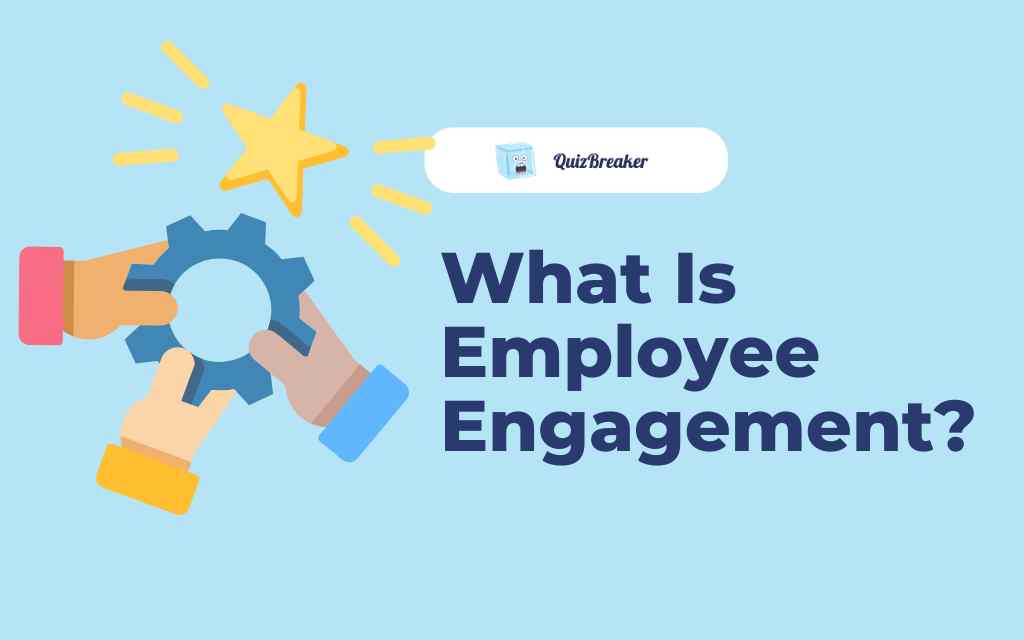
According to Investopedia, employee engagement is defined as a human resources (HR) concept that describes the level of enthusiasm and dedication a worker feels toward their job. Engaged employees care about giving their best work and strive to contribute to the company's goals, and feel that their efforts make a difference. An engaged employee is in it for more than a paycheck and may consider their well-being linked to their performance, and thus instrumental to their company's success.
In essence, employee engagement denotes how much an employee is passionate about their job, the level of commitment they feel toward the organization/company they work for, and how willing they are to put in that extra effort when it’s needed.
Of course, employees don’t need to overperform, overwork, or surpass their employer’s expectations each time, as that will result in burnout and stress. However, it’s about the subtle discernment that an engaged employee has, which basically helps them feel connected to their job in a much more meaningful way.
Why Is Employee Engagement Important?
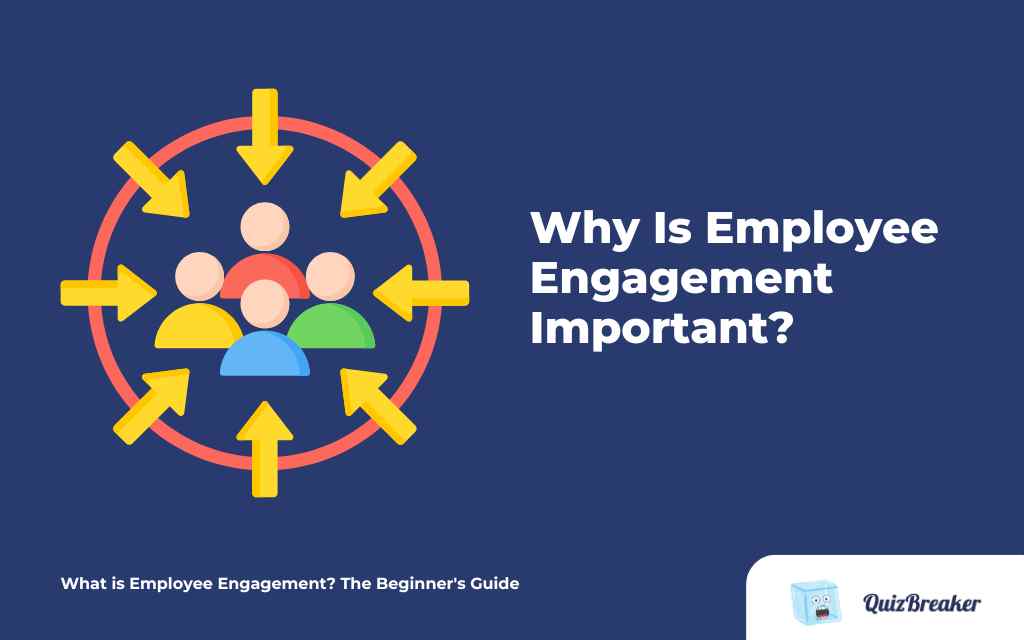
The level of engagement an employee has (or doesn’t have) besides impacting their own performance, also influences their colleagues, and ultimately, directly involves overall business outcomes.
This may sound exaggerated, however, once you fully understand why employee engagement matters so much, you’ll see how much sense it actually makes. After all, employee engagement has a major effect on each business decision, professional endeavor, and overall performance within a company, so it’s only natural to be further explored and discussed. These realizations should turn into actionable insights and employee engagement initiatives to increase the team's job satisfaction, which will inadvertently lead to more business success.
High employee retention
Employee engagement is also important because if an employee is satisfied with their current job position, that means they’re probably happy with the company on the whole, and are therefore more likely to stay instead of look for a job elsewhere. Put simply, employee engagement secures higher employee retention.
High productivity
Actively disengaged employees will only provide the bare minimum. In contrast, having an employee engagement strategy is linked to higher levels of productivity. An engaged employee will go above and beyond in completing their tasks and will deliver extraordinary results. Moreover, they will do everything they can to pursue the company mission as if it was their own. That sense of ownership leads to corporate productivity.
High revenue
Let’s not forget about higher profits, too! Companies that run an employee engagement program or two will have highly engaged staff and are much more likely to improve profitability than those companies whose workers procrastinate and don’t care about their organization.
Low employee absenteeism
In addition, an engaged workforce means lower absenteeism levels as well. In general, engaged staff take days off occasionally. It’s not that they don’t take them - it’s just that they’re not using them as an excuse to “run away” from important project deadlines, product launch days, and so on.
Such behavior affects the entire organization's authority, overall performance, customer satisfaction, and workplace relationships.
Emotional investment
Overall, highly engaged employees are more emotionally invested in what they do - in other words, they develop a deep and meaningful connection to the company. Of course, we’re not implying that they’ll perceive the company as the employer does, but there can definitely be a loyal and deep emotional commitment on their part.
This goes hand in hand with the excitement they feel toward their work, the connection they establish with their colleagues, the support they feel during the onboarding, mentoring, and coaching processes, and so on.
All in all, if an engaged employee develops such emotions for the company they work for, they’ll be that much more committed to seeing that your company goals come to fruition. As a result, you reduce employee turnover and encourage a positive attitude in the workplace.
Not sure what your employee turnover rate is? Try this employee turnover calculator to find out and check out our guide to reduce your turnover.
Employee Engagement Statistics That Matter
If you need numbers to further support the significance of employee engagement, we have you covered.
According to a Forbes article, there’s a close connection between employee engagement and the overall well-being of employees. Let’s see some more statistics which show why employee engagement should be prioritized:
-
teams with high engagement levels illustrate 21% greater profitability;
-
employees who feel their voices are being heard are said to be 4.6 times much more likely to be motivated to give their best at work;
-
96% of employees think that showing empathy is very important when it comes to advancing employee retention;
-
89% of HR experts believe that continuous employee feedback and regular check-ins are crucial for successful outcomes;
-
61% of employees experience burnout on the job;
-
disengaged employees are said to cost US companies up to $550 billion per year;
-
87% of employees expect support from their employer when it comes to balancing their personal commitments and work responsibilities;
-
89% of employees who are quite supportive of well-being initiatives are much more likely to recommend their organization as a great place to work for.
How Is Employee Engagement Measured?
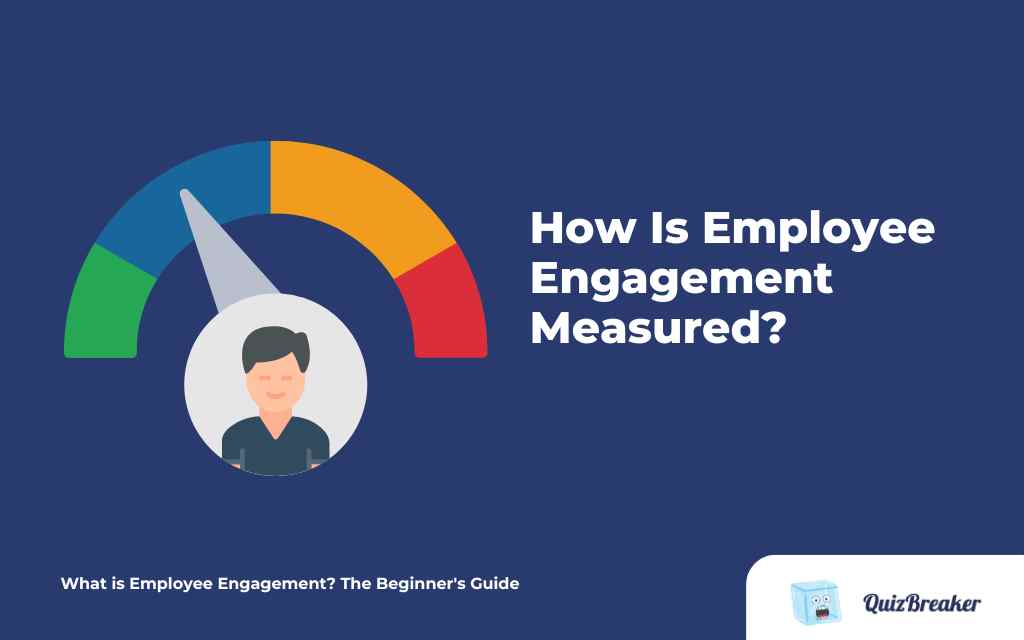
So how does one measure employee engagement? Here are some best practices to include in your action plan:
Establish goals and “rules”
Having clear goals and establishing company rules that workers can follow clearly reflects the company’s overall spirit. And when a worker is keen to satisfy the company’s goals and expectations, the organization blossoms.
So, whether your next goal is to double your revenue, work on providing better customer support, or laying out the ways in which employees can climb the corporate ladder, it’s important to understand that it’s all about stating such matters clearly.
Then, identifying which employees “respond” to your goals and rules will show you how engaged they are (or not).
Use your email
Email is probably one of the most underrated ways to measure employee engagement. And it’s probably because most employers don’t fully know how to use emails to measure engagement.
First of all, it’s important to identify an email tracking tool, which helps you gather data and monitor engagement. And when we talk about using emails to observe employee engagement, we refer to analyzing open-rates and click-through rates, and how employees behave across different departments.
Open rates show you how many employees actually open your emails. Put simply, it tells you how much they bother to see what you have to say. High open rates usually signal a pretty high engagement.
Next, click-through rates, also referred to as CTR, refers to the percentage of people who clicked on at least one link in your email message. Here’s how you can calculate it: divide the number of total employees who clicked by the number of emails you sent, and then multiply that ratio by 100. Do this, and you will have arrived at your email click-through rate.
Click-through rates let you know how much your employees are keen to learn essential company information, and what sort of content they find attractive.
Finally, analyzing the department(s) that seem to have the majority of both open rates and CTR helps you identify the teams that are the most (dis)engaged.
Engage in one-on-one meets
Nothing bonds an employer and an employee than a one-on-one meeting. Sadly, the only chance most employees get to speak with their employer is when they get interviewed for their job.
And although peers may help them adjust and the HR team might be here for them, the employer often seems to “fade in the distance”.
That said, there are employers who take their job and their workers seriously, and manage to build strong relationships with their employees. And of course, those are the employers who have the most engaged employees as well.
This isn’t a coincidence. It’s not even sheer luck.
You can’t fake connections in real life, the same way your employees can’t lie that they’re being engaged when in reality they can’t be more disengaged.
So, giving your employees opportunities to talk to you one-on-one allows you not only to get feedback and detailed rapport, but it helps you assess them by looking for both verbal and non-verbal clues. In essence, it enables you to get to know them better. You clearly see what they need to be engaged more, you understand where they’re coming from, what motivates them, what worries them, and so on.
This may sound weird at first, but such conversations are a very straightforward method of measuring employee engagement. Plus, you also get to ask them some questions directly without beating around the bush.
For instance, you can ask them about a recent positive experience they had with a colleague, a stressful project they may have worked on recently, how they’re getting along with the newest hire, and so on.
Check the employee absenteeism rate
We already talked about employee absenteeism in the previous section, so here we’ll just say that keeping track of your employees' behaviors when it comes to taking days off can also be used to measure their engagement.
In general, very high absenteeism rates indicate there’s high employee disengagement.
Do surveys
Employee engagement surveys are one of the most common engagement efforts companies deploy. After all, with such a wide range of employee engagement software out there - who wouldn’t opt for one?
When it comes to conducting such surveys, it’s fair to say that there’s not a one-size-fits-all approach. Some companies may conduct surveys once a year; others prefer a quarterly approach. That said, there are employers who don’t do employee engagement surveys at all.
But, there’s also another possibility, and it’s something that an increasing number of employers seem to approve of.
Namely, many employers pick online employee engagement platforms where they get to socialize with their employers each day, set up daily and weekly check-ins, conduct employee surveys, and customize questions suitable for their businesses.
Such platforms allow workers from the same company to be connected even if they end up working from home, are on a leave (and yet they wish to check on their peers), or are otherwise looking for a quick way to communicate something to a larger group of colleagues.
Also, such platforms are much more visually appealing and fun to use compared to emails, for instance (as some may think that certain things can be communicated via group emails).
As we said, such tools provide a way to measure employee engagement, track projects, compile survey results, and you also get to integrate them with many of the apps your company may already be using.
Keep track of your eNPS
Originally a customer service tool, the NPS (Net Promoter Score) later on became eNPS (employee Net Promoter Score), and is now used as a method to help organizations and companies calculate employee engagement and overall loyalty.
Before we tell you how you can keep track of your ePNS, let’s understand the beginnings of it. In essence, the score stems from the initial NPS question:
“On a scale of 0 to 10, how likely is it that you would recommend our organization to a friend or colleague?”
The respondents were split into 3 groups:
-
Promoters (scores 9-10) - these are the customers that refer your brand to others, and with that helping your business grow and expand;
-
Passives (scores 7-8) - this group includes the customers who seem to be satisfied, however, they’re very likely to opt for some of your competitors, too;
-
Detractors (score 0-6) - these are unhappy customers that may hinder your growth.
Now, how is the eNPS calculated?
First of all, you need to calculate the percentages of detractors and promoters (the passives can be ignored, as they’re perceived as being neutral). Next, you’re supposed to subtract the percentage of detractors from the percentage of promoters. The result you end up with is, in fact, your company’s eNPS.
This is what this looks like:
NPS = Promoters - Detractors / Total Respondents x 100
Let’s illustrate this with an actual example. Let’s imagine you’re running a company that has 10,000 employees, and 1,000 of them rated the company a 9 or 10, while 3,000 rated it a 0 to 6. This means that 10% are promoters, and 30% are detractors.
All in all, this means that the result is -20% eNPS score, which is alarming because it indicates that the company needs to seriously work on its employee engagement and employee loyalty.
How Can Employers Improve Employee Engagement?
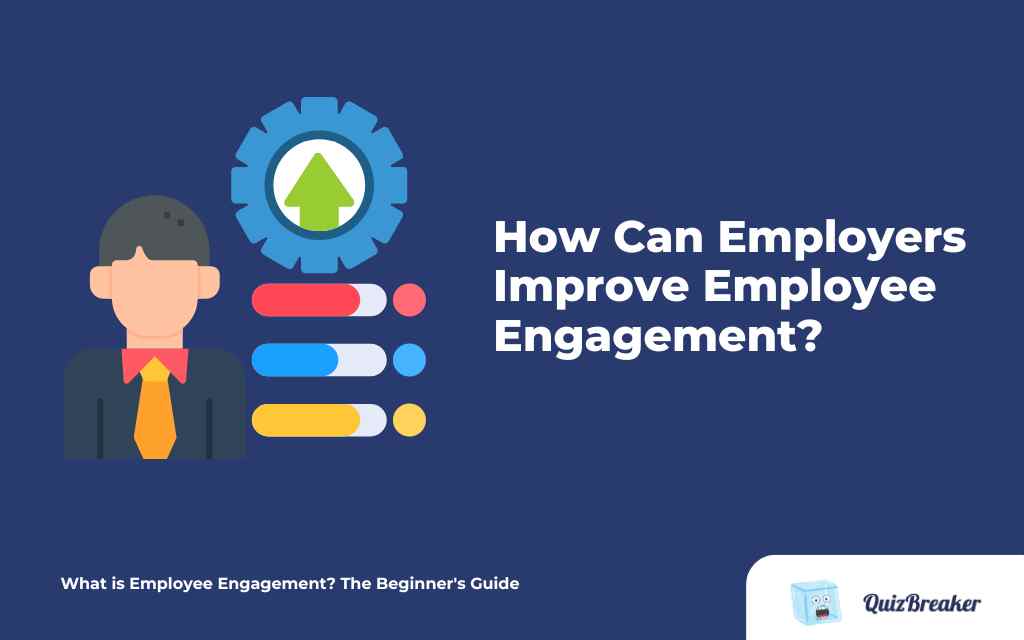
People want to feel like they belong in your company. The work environment, work ethics, performance, and productivity are things that shape each employee. However, workers wanting to belong and an employer actually creating an opportunity for them to feel that way are two separate things.
First and foremost, consider providing employees with a detailed onboarding process. That way you set high standards, and employees feel the need to return twice as much to you and the company. In other words, they’ll be voluntarily engaged.
Next, make sure there’s very little to no miscommunication among peers. But also, you need to pay attention to how you communicate with your workers, too. Employers can enhance employee engagement via effective communication, offering adequate training, discussing matters regarding career progress, as well as giving rewards.
Recognizing employees for their hard efforts makes them feel valued and appreciated. This then motivates them to work even harder. When employees feel rewarded, recognized, and appreciated, they wish to stay within the environment, or in other words, they show loyalty to the company they work for.
Finally, you need to make sure you let your employees know what matters to you. In other words, if you value teamwork over individual work, ensure they’re properly informed. If you wish workers to let you know they’ll be taking some time off well in advance, tell them beforehand so they have time to plan.
I Want To Learn More!
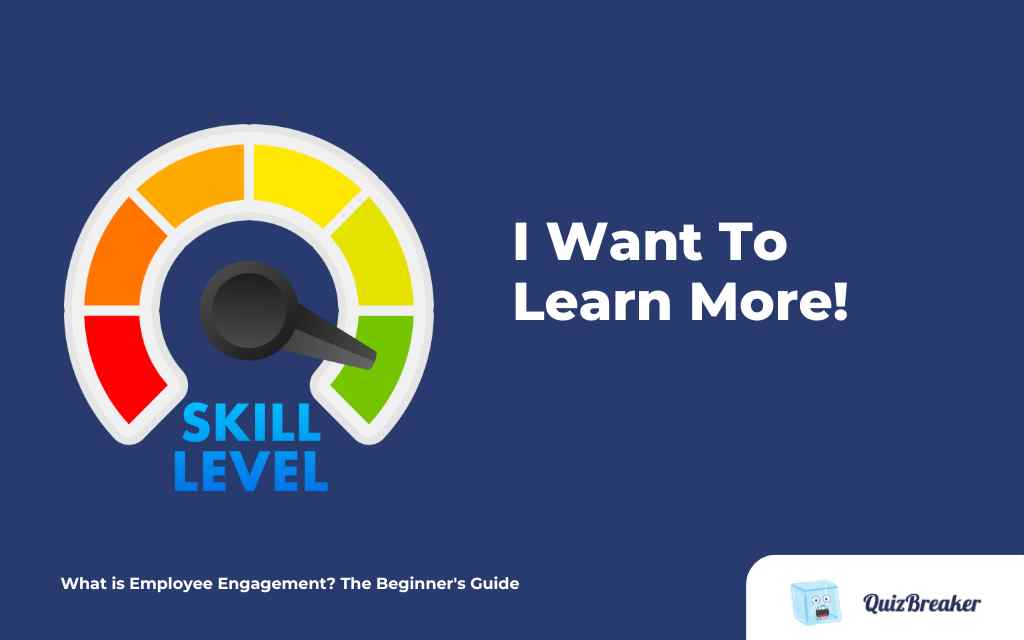
We’re firm believers that employers who engage in continuous learning and informal education not only get the best results, but manage to influence their employees’ in a positive way too.
In essence, once you as an employer take one step, it’s a matter of time before your employees follow suit.
Learning isn’t something that can be imposed on anyone, but setting an example can (sub)consciously impact employees even when we think it’s highly unlikely.
Hence, in this section we provide:
-
reading suggestions to further inspire your employee engagement practices;
-
insights into why surveys matter - you get to not only to see what employee engagement surveys look like, but actually use some of them in practice, too;
-
a do-it-now activity (hint: it includes quotes);
-
and a bonus tip.
A) Reading Suggestions
Below, you’ll find a reading list containing some of the best books about employee engagement out there.
Of course, you don’t need to read all of them right away (or ever), but choosing at least one that resonates with you may help you consider things from a different perspective.
Reading what other authors have to say about employee engagement can either confirm your own opinions, or challenge them. Both of these options are fine because the former tells you there are others out there with similar views like yours; and the latter gives you an opportunity for professional success and growth.
Here are our book suggestions:
-
Contented Cows Still Give Better Milk, Revised and Expanded: The Plain Truth about Employee Engagement and Your Bottom Line, by Bill Catlette and Richard Hadden
-
Carrots and Sticks Don't Work: Build a Culture of Employee Engagement with the Principles of RESPECT, by Paul L. Marciano
-
Build It: The Rebel Playbook for World-Class Employee Engagement, by Debra Corey and Glenn Elliott
-
The Employee Experience Advantage: How to Win the War for Talent by Giving Employees the Workspaces They Want, the Tools They Need, and a Culture They Can Celebrate, by Jacob Morgan
-
Employee Engagement: A Roadmap for Creating Profits, Optimizing Performance, and Increasing Loyalty, by Brad Federman
-
Employee Engagement 2.0: How to Motivate Your Team for High Performance (A Real-World Guide for Busy Managers), by Kevin Kruse
-
Fired Up Or Burned Out: How to Reignite Your Team's Passion, Creativity, and Productivity, by Carolyn Dewing-Hommes, Jason Pankau, and Michael Lee Stallard
-
The Best Place to Work: The Art and Science of Creating an Extraordinary Workplace, by Ron Friedman
-
Employee Engagement: Tools for Analysis, Practice, and Competitive Advantage, by William H. Macey, Benjamin Schneider, Karen M. Barbera, and Scott A. Young
-
On Fire at Work: How Great Companies Ignite Passion in Their People Without Burning Them Out, by Eric Chester
-
1,001 Ways to Engage Employees: Help People Do Better What They Do Best, by Bob Nelson
-
The 5 Languages of Appreciation in the Workplace: Empowering Organizations by Encouraging People, by Gary Chapman
-
We: How to Increase Performance and Profits through Full Engagement, by Kevin Kruse and Rudy Karsan
-
Building a Magnetic Culture: How to Attract and Retain Top Talent to Create an Engaged, Productive Workforce, by Kevin Sheridan
-
The Employee Engagement Mindset: The Six Drivers for Tapping Into the Hidden Potential of Everyone in Your Company, by Tim Clark
Aside from books, check out these other articles we wrote about employee engagement:
B) Surveys
As professionals who always strive to achieve balance in everything we do, we thought that it would make no sense for us to theorize about employee engagement without giving you any practical tips.
So, that’s what we’re doing in this part - we’ll focus on one of the methods employee engagement is frequently assessed, and that’s via employee engagement surveys.
The main purpose of employee engagement surveys or questionnaires is to assess employees’ overall commitment, motivation (or the lack of it), passion toward what they do, as well as other variables.
Here are several examples that show what employee engagement survey questions look like:
-
Do you frequently receive feedback from your supervisor?
-
Would you say that what you do for the company you work for is meaningful and valued at all times?
-
Is the amount of work you get on a daily basis manageable?
-
Have you ever felt like your work affected your private life in a negative way?
-
Are all employees treated equally in the company you work for?
This is by no means an exhaustive list - there are tons and tons of questions one may ask in order to get further insights. However, they give you a general idea of what you may expect when dealing with such surveys.
And if you wish to read more employee engagement survey questions, we invite you to check out the 100 Best Employee Engagement Survey Questions article to learn more.
C) A Do-It-Now-Activity
In this section, we’d like to invite you to take a closer look at five quotes which revolve around employee engagement, and provide some perspective around it.
Below each quote there are questions inspired from the quote. Reading quotes just for the sake of reading them isn’t a meaningful activity (you’ll get to learn more about this in the Frequently Asked Questions section).
However, reading a quote and actually thinking about it and analyzing it critically (whether it aligns with your belief system or not, for instance), takes the experience of “reading quotes” to a whole new level.
And that’s what we’re encouraging you to do now - go through each quote, read the questions (re-read them if necessary), and reflect upon them.
Let’s begin, shall we?
1)
“All the managers I interviewed had the same sense of identity and self-assurance. None of them were arrogant. Instead, they were clear about who they were and what needed accomplishing. They used that sense of self to engage their team and learn each team member’s strengths and contributions. Their courage and confidence were infectious to their team and to anyone who crossed their paths.”
Questions:
- What kind of a manager are you? Do you think you possess any arrogant traits? How can you tell? Are you clear about who you are as a leader? If you aren’t, what seems to be the problem? Do you feel that your confidence level and self-esteem affect your employees’ performance? If they do, in what way? What about managers or HR leaders who seem to struggle with their confidence? What implications can that have on their teams? How can they work on themselves? Do you think that managers with a lack of confidence equals employees who struggle with their confidence and self-esteem, too?
2)
“The job of human resources is to make sure that resources come to work with their hearts and go back to their homes with happiness.”
Questions:
- Do you agree with this quote? Why? Why not? What do you think is the job of HR? How does the HR team in your company ensure that “resources come to work with their hearts and go back to their homes with happiness?” Also, how do you feel that your employees perceive your HR team? Can they rely on them? Will they go to them if they have some issues? Should you as an employer be a mediator between these two groups of employees? Why? Why not?
3)
“As a business owner, you should think of each and every employee you hire as a fruit seed. You plant it in your ranks and water it regularly so that it may grow and blossom out to become a thriving member of your organization.”
Questions:
- How do you perceive your employees? Is it in a strictly professional manner or do you develop genuine affection toward them? Would you say that treating employees badly can ultimately affect your business negatively or would they fear you, and therefore work harder to please you? What is the right approach here? Also, if you’re too nice, do you think employees may somehow take advantage of it? Why? Why not?
4)
“It is never an idea, technology, market forces, or access to capital that makes a company innovative. What differentiates an innovative company from an average company is the people working inside the company.”
Questions:
- What makes a company innovative? Do you think your company is a good example of an innovative company? Why? Why not? What changes can you make right away to make your company even better than it is? Would you ever describe your company as an average one? What does an average company look like? How does its manager behave? What do its employees do? Finally, can an average company ever develop into an innovative one? If it can, what steps are needed for that to happen? Where should employers start?
5)
“One cannot measure a manager’s knowledge and performance in a vacuum. It involves their participation in business activities while bringing all of themselves to the process of development, including their spiritual, personal, and skill & ability development.”
Questions:
- How do you measure your own knowledge? Also, are you comfortable to have others commenting on your skills, knowledge, and abilities? How would you assess your own spiritual, personal, and ability development? What more can you do for yourself? How do you usually work on yourself? Is there anything you’d like to change about your managerial behavior and entrepreneurial approach? If yes, what is it? Also, what are some skills and abilities you already possess, and are quite proud of?
D) A Bonus Tip
This bonus tip that we want to share with you may not resonate with every employer out there. And that’s okay.
It’s up to all of us to find what works for us and our way of perceiving things rather than doing things the way others expect us to.
Now, with this tip, our purpose is to make you reflect not only on your employee engagement situation within your company, but on your own managerial skills and performance as well.
Put simply, we invite you to try journal writing.
Journaling has many benefits, from allowing you to explore some new ideas to identifying certain blockages and feelings you’re otherwise not comfortable talking about, however, the practice of journaling not only deepens the connection you have with your own self, but with your employees, too.
Now, How on Earth can journaling help me achieve that?, you may wonder.
Well, first and foremost, journaling is a great way to vent and manage your stress in a safe, yet a productive manner. Has your last employee engagement survey gone wrong? Has an employee thought some of the questions were irrelevant? Were you unhappy with the results? Write about this, or whatever seems to be bothering you.
You can even write about what it would take for you to make sure that employee satisfaction levels increase in the future. Make a plan. After a while, re-read what you wrote. You may even get new ideas, revisit old ones, and have an aha moment.
Even research supports the claim that outstanding leaders take the time to reflect.
And while we admit that journaling is not commonly recommended in this form, we’ve found it to be truly effective.
Frequently Asked Questions
What may happen if employers neglect employee engagement?
We don’t want to generalize, but we dare assume that (almost) all employers wish to have happy employees. They know that if their employees are joyful and satisfied, they’ll probably do a lot more for their company they work for.
However, wanting to have satisfied employees, and knowing how to make them happy (or at least regularly check employee happiness and satisfaction levels) are two different things.
That said, there are also those who ignore their employees and their needs. Neglecting your employees and not wanting to check how engaged your workers are can have a lot of negative consequences, not just for your workers’ well-being and careers, but for your company and its future progress, too.
In brief, here’s what could happen if employers don’t care about their employees and how engaged they are in the workplace:
-
A toxic work environment and a rude company culture are definitely some of the most common negative results of such neglect;
-
Poor leadership and entrepreneurial skills among peers;
-
Procrastination levels are set to increase slowly over time;
-
Many workers will start applying to other companies and perhaps even different job positions (as they may start perceiving the one they currently have as a not-so-prospective job position);
-
Employees may develop an “I don’t care”, “I’ll check it later”, “I’m not paid to do this” attitudes, and so on;
-
Low productivity, bad performance results, and ultimately lower revenue for the company, and so on.
Now, knowing what could happen if employers neglected employee engagement, you may wonder: Why would employers allow something like this to happen in the first place? And you’re completely right - we had the same questions, too.
This is what we found out.
Reasons behind neglecting employee engagement
There are numerous reasons as to why employers may decide to ignore their employees’ engagement. Here are the most common ones:
They don’t know how to do it.* And we get it - it sounds silly. They could just consult experts, or talk to their HR teams and come up with suggestions, right? But not all employers feel the same. Some employers might believe that this is a complex matter and even burdening their HR teams will result in problems in other sectors and more responsibilities. In essence, they fear of adding more responsibilities to their team without realizing that if they ignore their employees’ engagement, they’ll end up with much more serious problems in the future.
Employers don’t want to invest in employee engagement.* Some employers believe that addressing the employee engagement issue within their company will cost a fortune. But that isn’t quite the case. Of course, this all depends on the method you decide to opt for, but choosing an affordable employee engagement survey tool, for example, is a cost-effective solution.
Their bad organizational/managerial skills impede them from making decisions aligned with their employees’ needs.* Poor leadership comes out sooner or later in every company. Some employers lack the skills to come up with solutions that enhance employee engagement. They may be good at delegating tasks, solving problems, or even issuing orders, but they may have little to no regard for employee engagement and feedback. In other words, some employers simply don’t know any better.
Some employers think money solves everything.* Certain employers think that if they give enough bonuses, and increase their employees’ salaries after they’ve worked for them for a while, they’ve done everything they can (and should) for their employees. And while giving bonuses and offering competitive salaries is indeed important, this can’t compensate for someone’s mental health, burnout, dissatisfaction, to name a few. If an employer runs a company with low satisfaction levels, frustrated workers, badly managed projects and delegated tasks, and chaotic amothepshere - no salary or bonus can magically mask their disappointment and disengagement.
So, next time you talk to an employer (either from your industry or another one) who feels reluctant to address employee engagement, show them this section. We’re sure it will change how they think.
How is reading and discussing quotes a helpful activity?
You don’t have to be an expert to conclude that people love quotes. It’s enough to open your Facebook feed and you’ll probably notice right away at least several images with an inspiring quote written all over them (or it could be even someone’s status).
But what makes such quotes so appealing? And more importantly, how do they relate to the employee engagement subject we’re so focused on in this article?
We briefly explained our thoughts regarding quotes in the previous section, however, in this part we wish to go a bit deeper.
Quotes make us stop and reflect on smaller passages when we’re too busy to read other things. And sometimes reading something can be crucial in a decision we’re about to make, or a report we’re preparing to submit.
They’re a fantastic motivational asset, too. We even encourage you to print out some quotes and put them as wallpapers in the office in order to boost the work atmosphere. They could also start interesting discussions among employees. So, it’s not just about having random quotes on your office walls for everybody to ignore.
Pick relevant quotes - you may even choose quotes similar to the ones we’ve just shared with you! Start discussing them openly with your employees. See how they feel about employee engagement. It may be rude to directly ask certain questions out of nowhere, but once they’re part of a fruitful discussion, you let things flow naturally.
Getting insights into how your employees think, and what their underlying beliefs systems are can be invaluable. You not only get to see “the professional side” they show in front of you and their peers, but in this way you get to know them on a much more personal level, too.
All in all, we dare say that using quotes in such a manner can be one of the most spontaneous, yet effective methods of working toward better employee engagement.
What are the characteristics of an engaged employee?
Not all engaged employees behave in the same manner, however, there are some ways to recognize them. Here’s how:
-
They know what their role, tasks, and responsibilities are;
-
Not only are they aware of the things we’ve just mentioned - but they’re also motivated to do them;
-
They’re loyal to themselves, their peers, and their employer;
-
They don’t need directions every step of the way - they take initiative, implement what they’ve learned so far, and are able to rely on their previous experiences;
-
Engaged employees understand that selfishness, ignorance, and procrastination won’t bring any satisfactory results (neither for them, nor for their company);
-
They’re absolutely motivated to perform at a very high level, and then reap the benefits of their tough work;
-
They know what success looks like and aren’t afraid to push themselves;
-
Engaged workplace is very collaborative - they get along well with others, and know how to listen to other people’s ideas and suggestions;
-
They’re also very reliable and responsible;
-
They aren’t afraid to take up challenges;
-
Engaged workers are focused, have a problem-solving attitude, and believe firmly in their decisions.
A Few Words Before You Go…
We hope you enjoyed our beginner’s guide to employee engagement, and even if you’ve done this in the past and are looking for some more ideas, you’ve probably learned something new.
After all, even employers with the most engaged employees are always on the lookout for new ideas and fresh methods.
And we’re happy to say that we have them.



